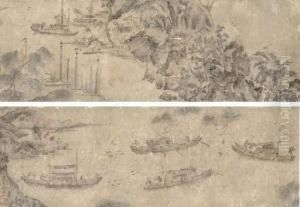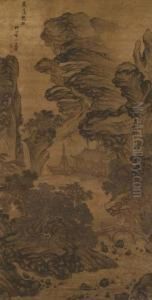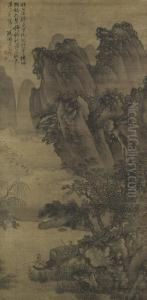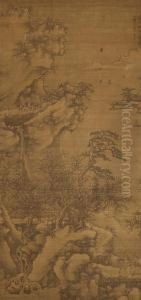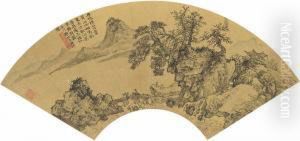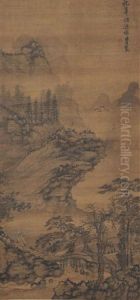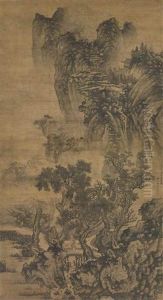Xie Shichen Paintings
Xie Shichen was a prominent Chinese painter, calligrapher, and poet during the Ming Dynasty, born in 1487 in Suzhou, which is in present-day Jiangsu Province, China. His life spanned a period of significant cultural, social, and political changes in China, and his works reflect a deep connection to the literati culture of his time. The literati, or scholar-officials, were highly educated members of Chinese society who passed rigorous examinations to serve in government positions, but many also excelled in the arts, particularly in poetry, calligraphy, and painting. Xie Shichen was among this esteemed group, and his art is a testament to the literati's ideals of personal expression and moral integrity.
Xie Shichen's paintings are characterized by their meticulous attention to detail and their evocative portrayal of landscapes and natural scenes. He was particularly skilled in the 'shanshui' (mountain-water) genre of painting, which focuses on the harmony and balance between the natural elements. His works often depict serene landscapes that invite contemplation and reflection, embodying the Daoist philosophy that was deeply intertwined with literati culture. Xie's landscapes are not mere representations of the physical world but are imbued with poetic and philosophical meaning, reflecting his belief in the unity of man and nature.
Beyond his contributions to painting, Xie Shichen was also an accomplished calligrapher and poet, and his works in these fields further demonstrate his artistic versatility and intellectual depth. His calligraphy is noted for its elegance and fluidity, capturing the essence of the characters with a seemingly effortless grace. As a poet, his compositions are rich with imagery and emotion, often exploring themes of solitude, the passage of time, and the joys and sorrows of life.
Despite his achievements, detailed records of Xie Shichen's life are relatively scarce, and much of what is known about him comes from his surviving works and contemporary accounts. He lived during a time when the Ming Dynasty was facing numerous challenges, including internal strife and external threats, and his art offers a window into the complex social and political landscape of 16th-century China.
Xie Shichen's legacy is preserved in the collections of major museums and galleries around the world, and his works continue to be studied and admired for their beauty and depth. His contributions to Chinese art, particularly in the realms of painting, calligraphy, and poetry, have established him as a key figure in the history of Chinese cultural expression, and his influence can still be felt in the practices of contemporary artists and scholars.

